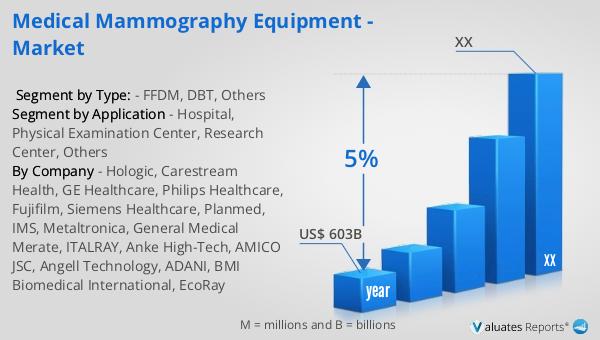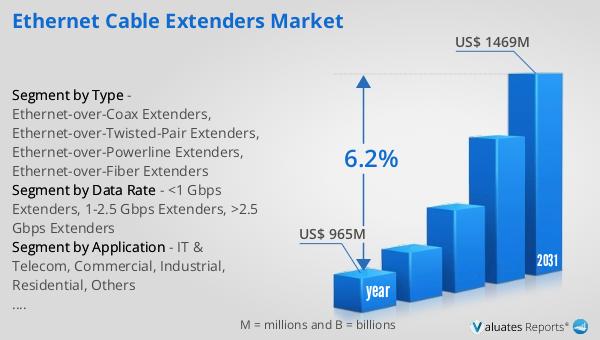What is Medical Mammography Equipment - Global Market?
Medical mammography equipment is a crucial component in the global healthcare market, specifically designed for the early detection and diagnosis of breast cancer. This equipment uses low-dose X-rays to create detailed images of the breast, allowing healthcare professionals to identify abnormalities or changes in breast tissue. The global market for medical mammography equipment is driven by the increasing prevalence of breast cancer, growing awareness about early detection, and advancements in imaging technology. As healthcare systems worldwide prioritize early diagnosis and preventive care, the demand for mammography equipment continues to rise. Additionally, government initiatives and funding for breast cancer screening programs further boost the market. The equipment is available in various forms, including film-screen mammography, full-field digital mammography (FFDM), and digital breast tomosynthesis (DBT), each offering unique benefits in terms of image quality and diagnostic accuracy. The market is also influenced by technological innovations, such as the integration of artificial intelligence and machine learning, which enhance the precision and efficiency of mammography procedures. Overall, the global market for medical mammography equipment is poised for significant growth, driven by the need for effective breast cancer screening and diagnosis.

FFDM, DBT, Others in the Medical Mammography Equipment - Global Market:
Full-field digital mammography (FFDM) is a type of mammography that uses digital receptors and computers instead of traditional X-ray film to examine breast tissue for cancer. FFDM offers several advantages over conventional film-screen mammography, including improved image storage, retrieval, and transmission capabilities. The digital format allows for enhanced image manipulation, such as adjusting contrast and magnification, which can aid in more accurate diagnosis. FFDM systems are widely adopted in the global market due to their ability to produce high-quality images with lower radiation doses. Digital breast tomosynthesis (DBT), on the other hand, is an advanced form of mammography that creates a three-dimensional image of the breast. DBT involves taking multiple X-ray pictures of each breast from different angles, which are then reconstructed into a 3D image. This technique provides a clearer and more detailed view of breast tissue, improving the detection of small tumors and reducing the number of false positives. DBT is particularly beneficial for women with dense breast tissue, where traditional mammography may be less effective. The global market for DBT is expanding rapidly as healthcare providers recognize its potential to improve diagnostic accuracy and patient outcomes. In addition to FFDM and DBT, other types of mammography equipment are also available in the market. These include contrast-enhanced mammography, which uses a contrast agent to highlight areas of concern, and breast ultrasound, which is often used as a supplementary tool to mammography. Each type of equipment has its own set of advantages and limitations, and the choice of equipment depends on various factors, including patient characteristics, clinical needs, and resource availability. The global market for medical mammography equipment is characterized by continuous innovation and technological advancements. Manufacturers are investing in research and development to introduce new features and improve the performance of existing equipment. For instance, the integration of artificial intelligence (AI) and machine learning algorithms in mammography systems is gaining traction. AI can assist radiologists in interpreting mammograms by identifying patterns and anomalies that may be indicative of cancer. This not only enhances diagnostic accuracy but also reduces the workload of healthcare professionals. Furthermore, the development of portable and mobile mammography units is expanding access to breast cancer screening in remote and underserved areas. These units can be deployed in community settings, making it easier for women to undergo regular screenings without having to travel long distances. The global market for medical mammography equipment is also influenced by regulatory standards and guidelines. Governments and healthcare organizations are implementing stringent regulations to ensure the safety and efficacy of mammography procedures. Compliance with these standards is essential for manufacturers to gain market approval and maintain consumer trust. In conclusion, the global market for medical mammography equipment is diverse and dynamic, driven by the need for effective breast cancer screening and diagnosis. FFDM, DBT, and other types of mammography equipment offer unique benefits and are widely adopted in healthcare settings worldwide. Technological advancements, regulatory standards, and increasing awareness about breast cancer are key factors shaping the market landscape. As the demand for early detection and preventive care continues to grow, the market for medical mammography equipment is expected to expand further, offering new opportunities for innovation and growth.
Hospital, Physical Examination Center, Research Center, Others in the Medical Mammography Equipment - Global Market:
Medical mammography equipment plays a vital role in various healthcare settings, including hospitals, physical examination centers, research centers, and other facilities. In hospitals, mammography equipment is an essential tool for diagnosing and monitoring breast cancer. Hospitals often have dedicated breast imaging departments equipped with advanced mammography systems to provide comprehensive care to patients. These departments work closely with oncologists, surgeons, and other specialists to develop personalized treatment plans based on the findings from mammograms. The availability of state-of-the-art mammography equipment in hospitals ensures that patients receive accurate and timely diagnoses, which is crucial for effective treatment and improved outcomes. Physical examination centers also utilize medical mammography equipment to offer breast cancer screening services to the general population. These centers are often part of larger healthcare networks or operate independently to provide preventive care services. Mammography screenings at physical examination centers are typically conducted as part of routine health check-ups, especially for women over the age of 40 or those with a family history of breast cancer. The use of mammography equipment in these centers helps in the early detection of breast cancer, allowing for prompt intervention and reducing the risk of advanced-stage disease. Research centers play a significant role in advancing the field of mammography by conducting studies and clinical trials to evaluate new technologies and techniques. These centers often collaborate with academic institutions, healthcare organizations, and industry partners to explore innovative approaches to breast cancer detection and diagnosis. Medical mammography equipment in research centers is used to gather data, test new imaging modalities, and assess the effectiveness of emerging technologies. The insights gained from research studies contribute to the development of improved mammography systems and protocols, ultimately benefiting patients and healthcare providers. In addition to hospitals, physical examination centers, and research centers, medical mammography equipment is also used in other settings, such as mobile screening units and community health clinics. Mobile mammography units are equipped with portable mammography systems that can be transported to remote or underserved areas, providing access to breast cancer screening services for women who may not have easy access to healthcare facilities. These units play a crucial role in increasing screening rates and ensuring that all women, regardless of their location, have the opportunity to undergo regular mammograms. Community health clinics also utilize mammography equipment to offer affordable and accessible screening services to low-income and uninsured populations. These clinics often partner with government programs and non-profit organizations to provide subsidized or free mammograms, helping to reduce disparities in breast cancer screening and improve health equity. Overall, the usage of medical mammography equipment in various healthcare settings is essential for the early detection and diagnosis of breast cancer. Hospitals, physical examination centers, research centers, and other facilities rely on advanced mammography systems to provide high-quality care to patients and contribute to the ongoing efforts to combat breast cancer. As the global market for medical mammography equipment continues to grow, the availability and accessibility of these life-saving tools are expected to improve, ultimately leading to better health outcomes for women worldwide.
Medical Mammography Equipment - Global Market Outlook:
Based on our analysis, the global market for medical devices, which includes medical mammography equipment, is projected to reach approximately $603 billion in 2023. This market is anticipated to experience a steady growth rate, with a compound annual growth rate (CAGR) of 5% over the next six years. This growth is driven by several factors, including the increasing prevalence of chronic diseases, advancements in medical technology, and the rising demand for healthcare services worldwide. The medical devices market encompasses a wide range of products, from diagnostic imaging equipment to surgical instruments and wearable health devices. Within this market, medical mammography equipment plays a crucial role in the early detection and diagnosis of breast cancer, contributing to the overall growth of the sector. As healthcare systems continue to prioritize early diagnosis and preventive care, the demand for mammography equipment is expected to rise, further fueling the expansion of the medical devices market. Additionally, government initiatives and funding for healthcare infrastructure development are likely to support market growth, as countries invest in modernizing their healthcare systems and improving access to advanced medical technologies. The integration of digital technologies, such as artificial intelligence and machine learning, into medical devices is also expected to drive innovation and enhance the efficiency of healthcare delivery. Overall, the global market for medical devices, including medical mammography equipment, is poised for significant growth, offering new opportunities for manufacturers, healthcare providers, and patients alike.
| Report Metric | Details |
| Report Name | Medical Mammography Equipment - Market |
| Accounted market size in year | US$ 603 billion |
| CAGR | 5% |
| Base Year | year |
| Segment by Type: |
|
| Segment by Application |
|
| By Region |
|
| By Company | Hologic, Carestream Health, GE Healthcare, Philips Healthcare, Fujifilm, Siemens Healthcare, Planmed, IMS, Metaltronica, General Medical Merate, ITALRAY, Anke High-Tech, AMICO JSC, Angell Technology, ADANI, BMI Biomedical International, EcoRay |
| Forecast units | USD million in value |
| Report coverage | Revenue and volume forecast, company share, competitive landscape, growth factors and trends |
